Pandharpur is a large town on the banks of Bhima river, or Chandrabhaga as it is locally known. It is referred to in ancient texts by various names such as Pandhari, Pandurangapur, Phaganipur, Pundarik Kshetra. It is impossible to trace the original forms from which these derivatives have been evolved.
Some call it bhu-vaikuntha, “the spiritual world on earth.” Others call it Dakshina Dvaraka, the Dvaraka of the South. Because of the way the river bends as it reaches Pandharpur, it is known as the Candrabhaga (“crescent moon”). For the devotees of Vitthala, this river is as holy as the Ganges.
Along the riverbank are fourteen ghatas, or bathing places. The main one is Maha Dvara Ghata. There is a short street that links this ghata to the eastern gate of the Vitthala temple.
The “Vi” in Lord Vithoba’s name denotes knowledge and “Thoba” denotes shape. He is the shape of knowledge or the deity of knowledge. Another interpretation is that the word “Vitthala” is said to be derived from the Marathi word “Vit”, meaning brick. The reason behind the brick will be explained later in this article. “Ba” is used to denote “father” in Marathi.
The specialty of this temple is the position in which Lord Vittal is found. His hands are placed on his hips and the expression of this posture shows that he is enjoying the bhajans of his devotees.
Reconstruction of the historical development of Vithoba worship has been much debated. In particular, several alternative theories have been proposed regarding the earliest stages, as well as the point at which he came to be recognized as a distinct deity. The Pandurangashtakam stotra, a hymn attributed to Adi Shankaracharya of the 8th century, indicates that Vithoba worship might have already existed at an early date.
A stone inscription dated 1237, found on an overhead beam of the present Vithoba temple, mentions that the Hoysala king Someshvara donated a village for the expense of the bhoga (food offering) for “Vitthala”
The black stone temple hosts the five-thousand-year-old self-manifested Deity of Lord Vitthala. The main entrance of Lord Vittala’s Temple is facing towards the Chandrabhaga or Bhima river. The samadhi of Namadev and Chockamela is located at the entrance. Pilgrims will first pray to the devotees and then enter the temple. A small Ganesh shrine is present inside the temple as the first shrine. Next is a small hall where bhajans are performed. Then a small shrine for Garuda and Hanuman. After climbing a few steps, we can see the slightly smiling, blackish-complexioned deity of Sri Vitthala, who is three and a half feet tall. He stands on a brick, with His hands resting on His hips. This posture reflects His pastimes in Pandharpur. We can have this mukha darshan any time without standing in the queue.
For padha darshan (to touch the Lotus feet of the Lord), there is an entrance which leads to the queue complex outside the temple. It will lead to many small shrines of various bhaktas, then towards Lord Panduranga. We can directly touch the feet of the Lord. There are Shrines for Rukmini Devi, Sathyabhama Devi, Radhika Devi, Lord Narasimha, Lord Venkateshwara, Goddess Mahalakshmi, Nagaraj, Ganesha, and Annapoorna Devi.
Lord Vithal is none other than Lord Vishnu, Lord Narayana or Lord Krishna. It is believed that Lord Krishna had incarnated at the end of dwapara yuga on the eighth day of the dark fortnight in the holy month of Shravan (as per the Hindu calendar). The worship of Lord Vitthala has been derived mainly from the Puranas. His worship has been made well-known by the teachings, poems, kirtans, and padas of great vaishnava saints of Maharashtra from the 13th through the 17th centuries. They were saints like Sant Namdeo / Namdev, Sant Jnaneshwar, Sant Eknath and Sant Tukaram. Pundalik, a saint was also closely associated with this shrine, and hence this shrine is known as Pundarika Pura.
Legends regarding Vithoba usually focus on his devotee Pundalik or on Vithoba’s role as a savior to the poet-saints of the Varkari faith. As discussed in the devotional works section above, the legend of Pundalik appears in the Sanskrit scriptures Skanda Purana and Padma Purana. It is also documented in Marathi texts: Panduranga-Mahatmya by a brahmin named Sridhara; another work of the same name written by Prahlada Maharaj; and also in the abhangas of various poet-saints.
Pundalik is a devoted son to his parents Janudev and Satyavati, who lived in a forest called Dandirvan. After his wedding, Pundalik begins ill-treating his parents. Tired with their son’s misbehavior and ill treatment, the elderly couple decide to leave for Kashi. Legend holds that people who die in the city of Kashi attain salvation and emancipation from the cycle of birth and death; so, many pious Hindus in the bygone era would relocate to Kashi as their end drew near.
However, the elderly couple are not destined to escape their suffering so easily. Upon hearing his parents’ plans, Pundalik and his wife decide to join them on pilgrimage. The ill treatment continues. While the youthful son and his wife ride on horseback, the frail old couple walks in bad weather. Pundalik even makes his old parents work to make his own journey comfortable. Every evening, when the party camps for the night, the son forces his parents to groom the horses and do other jobs.
On the way to Kashi, the group reached the ashram (hermitage) of a pious and venerable sage, Kukkutswami. Exhausted, the family decides to spend a few days there. That night, when all were asleep, Pundalik by chance is awake and sees a remarkable vision. Just before dawn, a group of beautiful young women, dressed in soiled clothes, has entered the ashram; they clean the floor, fetch water and wash the venerable sage’s clothes. After finishing their chores, they go to the prayer-room. When they reappear after prayer, their clothes are spotlessly clean. Then, they vanish as inexplicably as they had appeared.
Pundalik was not moved to raise an alarm, but feels a deep sense of peace witnessing the scene. It remains on his mind the whole day and he resolves to remain awake the next night, and confirm it was not merely a dream. This time, however, Pundalik is very curious.
He approaches the beautiful women and asks details. They reply, they are the Ganga (Ganges), Yamuna and other holy rivers of India—revered for their holiness. Pilgrims wish to take a dip in their holy waters to wash away their sins, which in fact are soiling their clothes. Then, the women say: “But O Pundalik, you, with your ill-treatment of your parents, are the greatest sinner of them all”. Pundalik is utterly shocked and his consciousness transforms. He realizes his misdeeds, becomes entirely devoted to his parents and ensures their comfort, even risking his own.
Meanwhile, Radha, the milkmaid-lover of Krishna, came to Dwarka, the kingdom of Krishna, and sat on his lap. Radha did not honor Rukmini, the chief queen of Krishna, nor did Krishna hold Radha accountable for the offense. Offended, Rukmini left Krishna and went to the forest of Dandivana near Pandharpur. Saddened by Rukmini’s departure, Krishna searched for his queen and finally found her resting in Dandivana, near Pundalik’s house. After some coaxing, Rukmini was pacified.
Devotion in any form reaches God swiftly. Impressed by Pundalik’s devotion to his parents, Krishna planned to bless Pundalik immediately. Krishna knocks at Pundalik’s door, when he is busy serving his parents food. Pundalik realizes God is at his door, but such was his devotion to his parents, that he wanted to complete his duties and only then attend the visitor. Pundalik does something strange but out of devotion. He throws a brick outside for God to stand on and wait for him until he finishes attending to his parents. It is the first day of the monsoon so it is wet and muddy outside. If Lord Krishna stands upon a brick his feet will remain clean and dry.
Seeing this act, Krishna was extremely impressed and the ever-loving God waited for his devotee. When Pundalik came out, he begged for pardon, but far from being displeased, Krishna was taken over by Pundalik’s love for his parents and granted a boon. Pundalik requested Krishna to stay back on Earth and bless all his true devotees. He agreed to take the form of Vithoba, or God who stood upon a brick, and a temple came up at that spot. Along with Vithoba, Rukmini (Mother Rukmini, the consort of Krishna) is also worshipped here.
An interesting tale is that of the temple’s first step called “Namdev Chi Payari” (step of Namdev). The child and future saint, Namdev was an ardent devotee of Vithoba. One day his mother asks him to complete the ritual of “naivedya” (any food made in the house is first offered to God, the ritual comprises placing the offering plate before the deity and sprinkling water around the plate and with a prayer to God). Namdev faithfully does “naivedya” and waits for God to appear and take the offering. But he is disheartened. He keeps praying and requests God to come in person and accept the offering. With no answer, the child starts banging his head at the feet of God. Seeing this utmost devotion and innocence of a child, God appears, eats the offering and blesses Namdev. Namdev asks for being present in the “first step” at His temple, so that innumerable devotees would touch him with their feet before having darshana. Thus this first step is called “Namdev Chi Payari”. It is also believed that Tukaram, a 17th-century devotee of Krishna spent his last days in the temple.
The most outstanding display of the Maharashtrian devotion to Lord Vitthala is the Dindi Yatra, a pilgrimage on foot that culminates in Pandharpur. It has been performed annually for the last seven hundred years.
The huge Ashadhi Ekadashi festival—draws a crowd of 700,000 people. As many as 200,000 come on foot. The festival falls during the month of Ashadha (July) and marks the beginning of Caturmasya, the four months of the rainy season. According to the Padma Purana, on that day the Lord goes to sleep for four months. When He wakes up, at the end of the month of Karttika, another festival is held, the second biggest.
Pandharpur Ashadi Ekadashi Wari journey has been honored by World Book of Records, London under the title ‘One of the Most visited places in a day’.
Many of the pilgrims are varkaris. The word varkari combines the words vari and kari, the former standing for the regular trip to Pandharpur, the latter meaning the one who does it. Varkari thus means “one who journeys to Pandharpur at a specific time in the year.” Varkaris vow to visit Pandharpur every month, or at least once a year, during an Ekadashi festival.
The varkaris form well-organized and disciplined processions called Dindis, which start off from the birth-sites and samadhi places of various saints and converge in Pandharpur. The pilgrims travel 150 to 300 kilometers, depending on where they start. The biggest of all Dindis is that of Jnaneshvara, which forms a gigantic procession. It originates in Alandi, near Pune, and covers about 250 kilometers in an eighteen-day walk. Some of the smaller groups are on the road for about a month. Many more come by bus and train.
These processions have remained unbroken since it began despite wars, famines and floods. More than fifty palkhis of saints assemble at Pandharpur every year.
The bhakti marg (path of devotion) as propounded by Sant Jnyaneshwar, teaches us to forget the physical self in pursuit of the Lord. When the Varkaris sing and dance during the pilgrimage, they forget the material world around them.
Along with the Dindi procession, seva to the poor and needy is done reflecting that Lord is in all forms. This is called ‘Seva Dindi’. During the Seva Dindi, the people on pilgrimage undertake selfless service to the poor and needy like Amrut Kalash (Annadhan), Narayan seva, medical seva, building & repairing rural infrastructure etc.
Day after day, undaunted by heat or rain, the pilgrims fill the air with tumultuous chanting. Sometimes they dance and sometimes run, rushing ecstatically towards Pandharpur and their Lord. In the midst of this procession the words spoken by the Lord in the Padma Purana come alive:
tatra tishthami narada
yatra gayanti mad-bhaktah
“O Narada, I stay where My devotees glorify Me.”
Chanting the continuous glories of the Lord in the procession purifies an individual, there is an inner cleansing that takes place in mind, body and spirit and the participants tends to lose their individual identities and experience bliss. It develops all aspects of human personality and helps us understand the true purpose of Life.
Bilvamangala Thakura warns travelers passing through Pandharpur:
pandhari che bhoota mothe
aalya gailya zhadapi vaatay
“Do not walk on the bank of the river Bhima. A bluish-black person stands there, and even though His hands rest peacefully on His hips, He is expert at stealing the heart of anyone who sees Him.”
It seems that the varkaris carefully ignore Bilvamangala Thakura’s advice. In fact, they are especially eager to meet that person.
There is another great specialty in this temple and it is the way we worship the Lord. They adopt a process called “padha sparisa seva” which is that we can place our forehead touching the divine feet of Lord Vittala in the garbagriham. It is considered extra special if we do it on Wednesdays.
In the bed of the Bhima river and a furlong from the Vitthal shrine is the temple or samadhi of Pundalik, the man who brought the Lord to Pandharpur. It is a square room (internally), with an open arched portico in its front.
This portico is larger than the garbhagriha. The shrine is surmounted by a brick and mortar spire that is pyramidal in shape, rising five stories. The main object or worship at this place is a shivalinga. The linga is covered with a close fitting brass cover and on it is set a hollow bust of the deity.
Saint Tukarama was the most famous of all Maharashtrian saints. He lived during the seventeenth century, and over the last three hundred years his devotional influence has been deeply felt by the local people. His poems, the 4,500 verses known as the Abhangas, have become part of the public memory of Maharashtra. They are sung in every village and every home.
In his autobiography, Tukarama says he was initiated in a dream by Sri Caitanya Mahaprabhu.
Lord Caitanya visited Pandharpur while on a journey through South India, apparently to search for His sannyasi brother, Sankararanya, formerly known as Visvarupa.
tatha haite pandarapure aila gauracandra
viththala-thakura dekhi’ paila ananda
(Chaitanya-Charitamrta, Madhya-lila 9.282–283)
“From there Sri Caitanya Mahaprabhu went to Pandarapura, where He happily saw the temple of Viththala Thakura.”
In Pandharpur, Lord Caitanya met Sri Ranga Puri, a Godbrother of His spiritual master, Isvara Puri. They talked about Lord Krishna continuously for five to seven days.
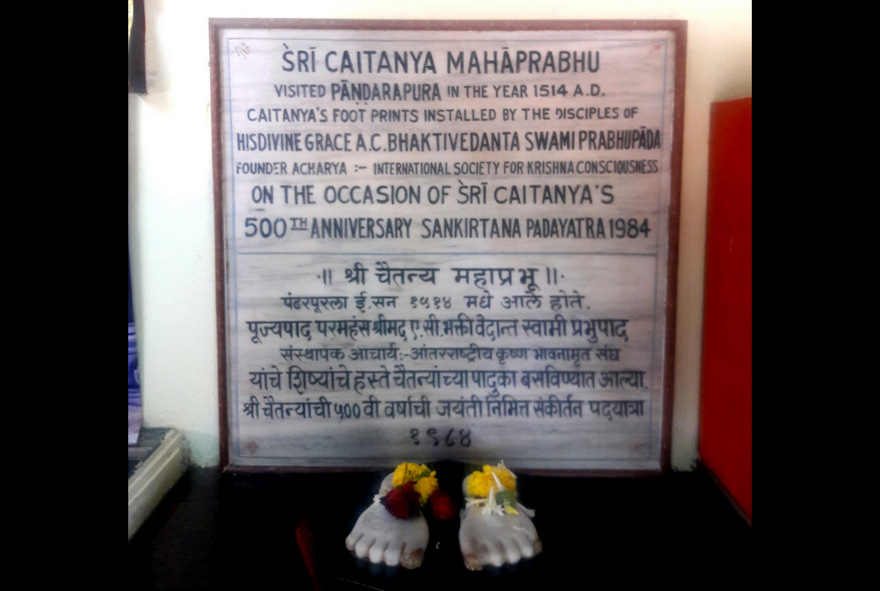
During His tour of South India, Lord Chaitanya was constantly on the move, but he stayed in Pandharpur for about eleven days. His pastimes there, and those of His brother, establish yet another link between Pandharpur and the Gaudiya Vaisnava tradition followed by the present-day Hare Krishna devotees.

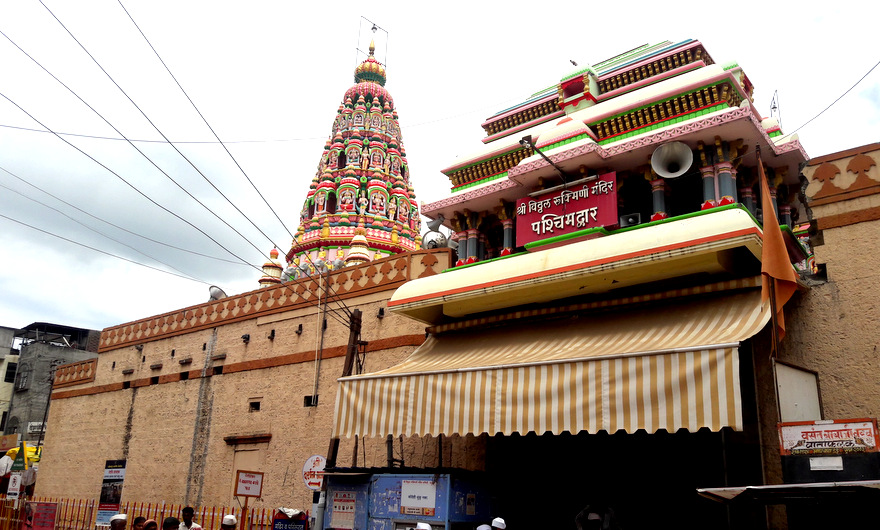
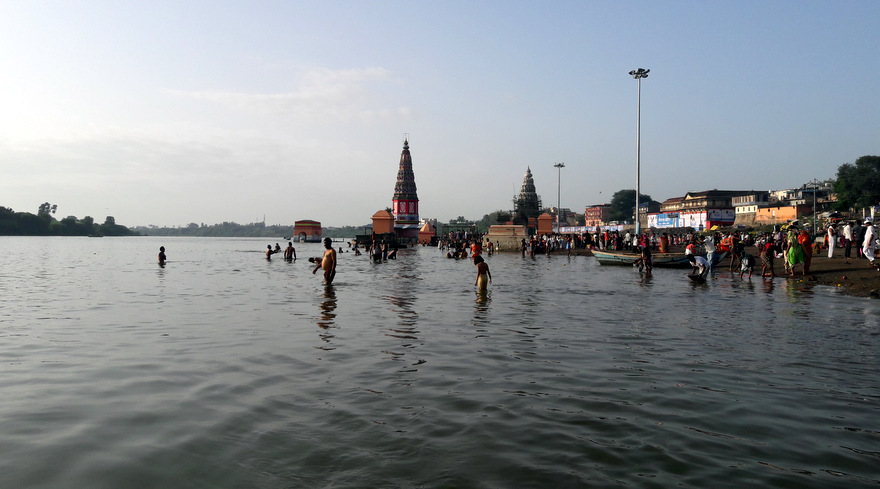
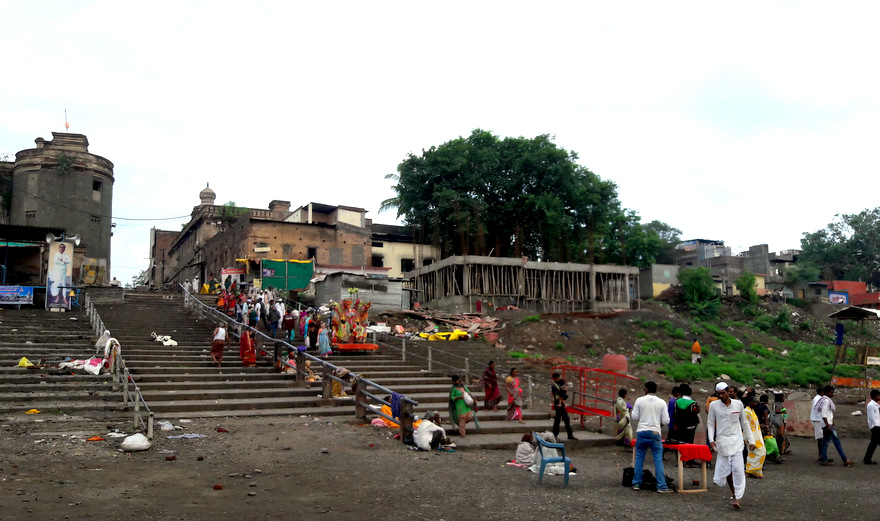
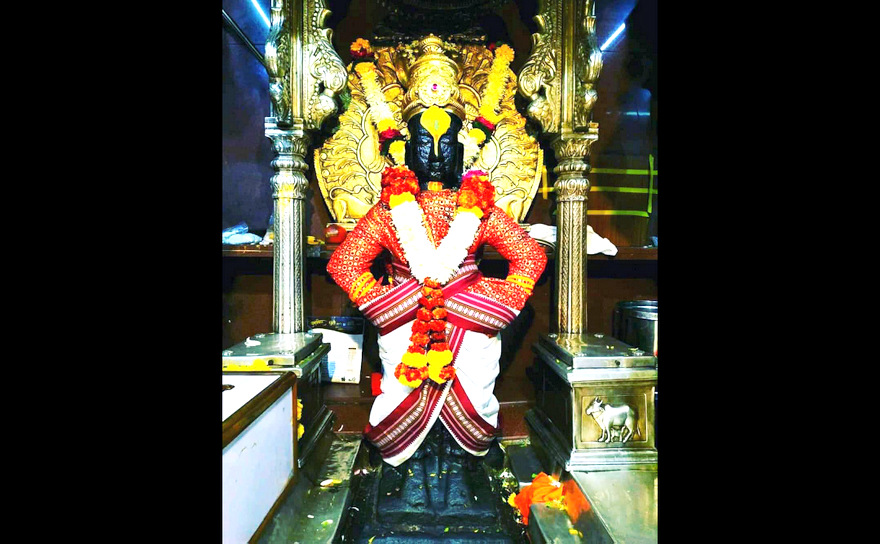
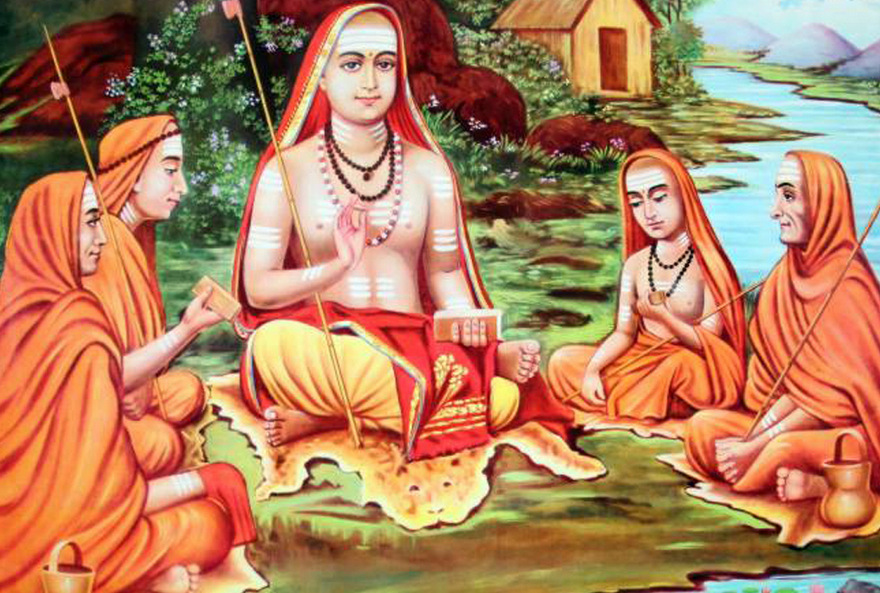
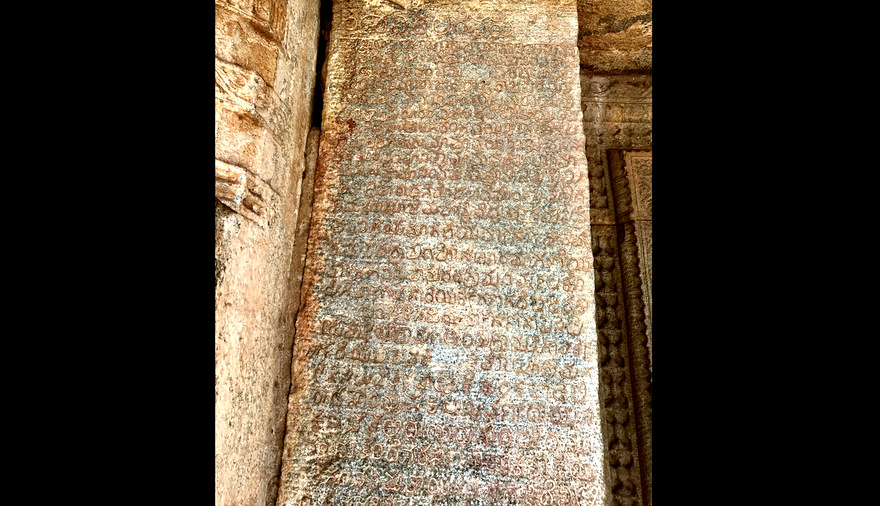

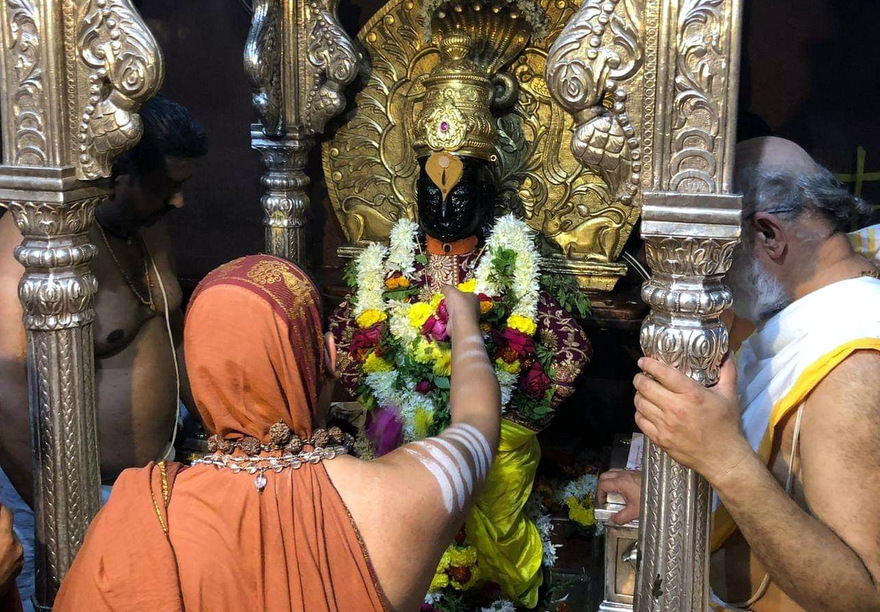
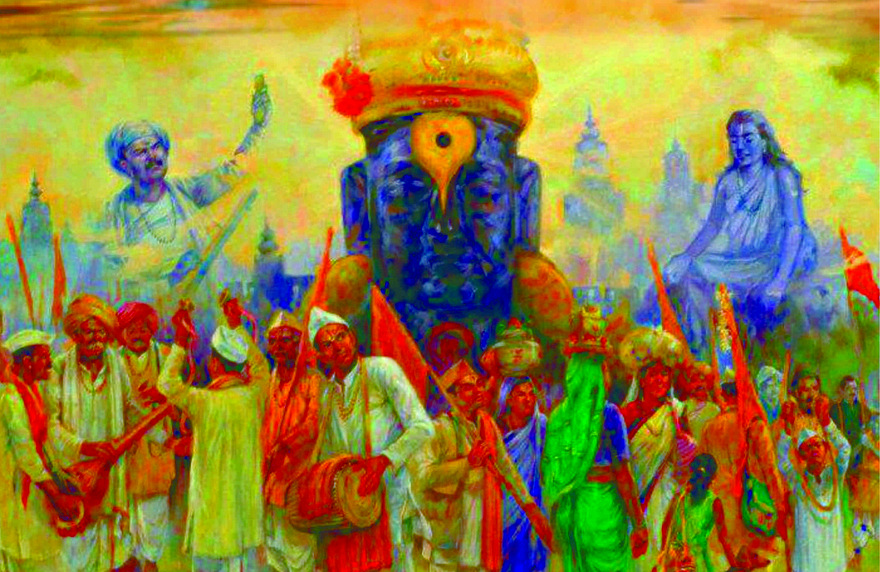
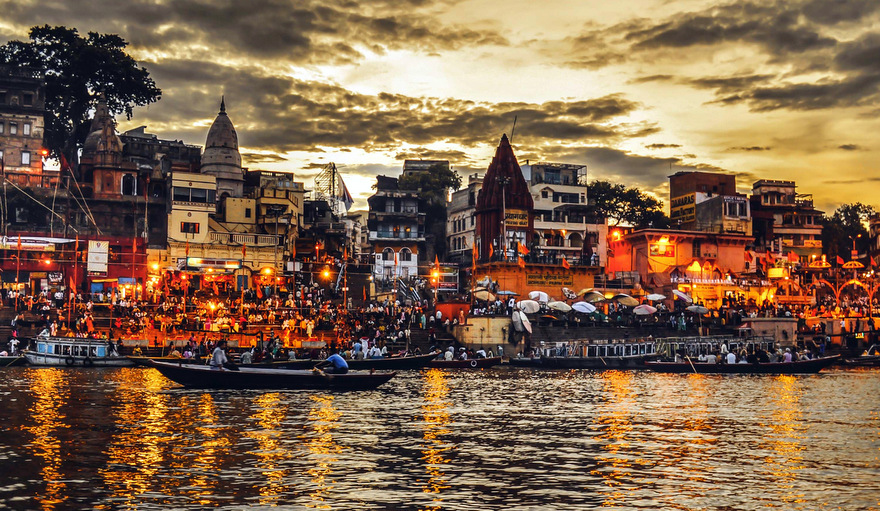
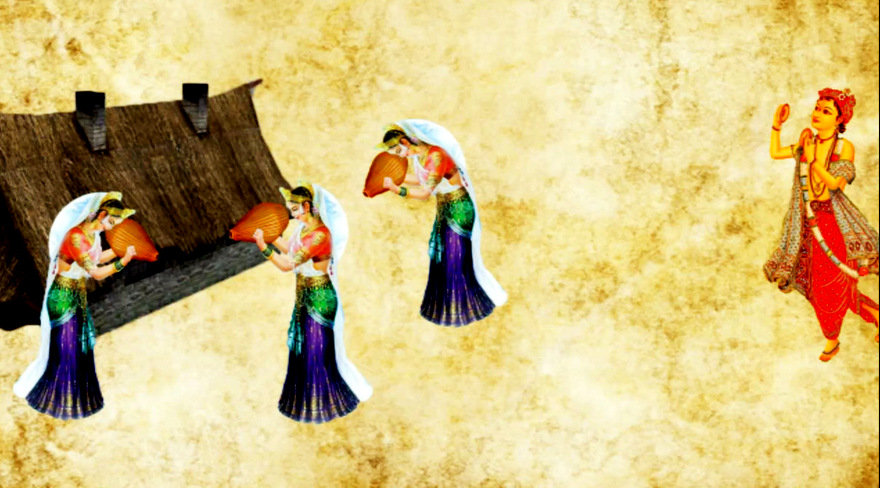
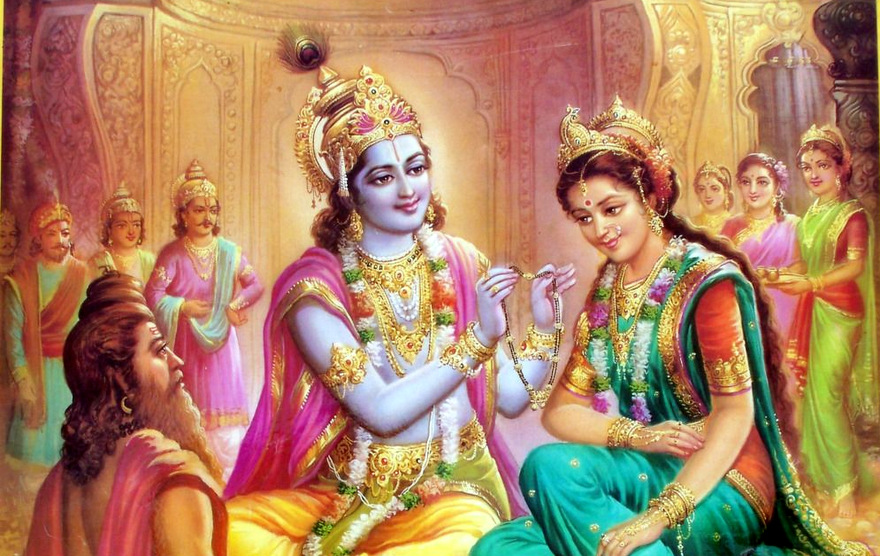
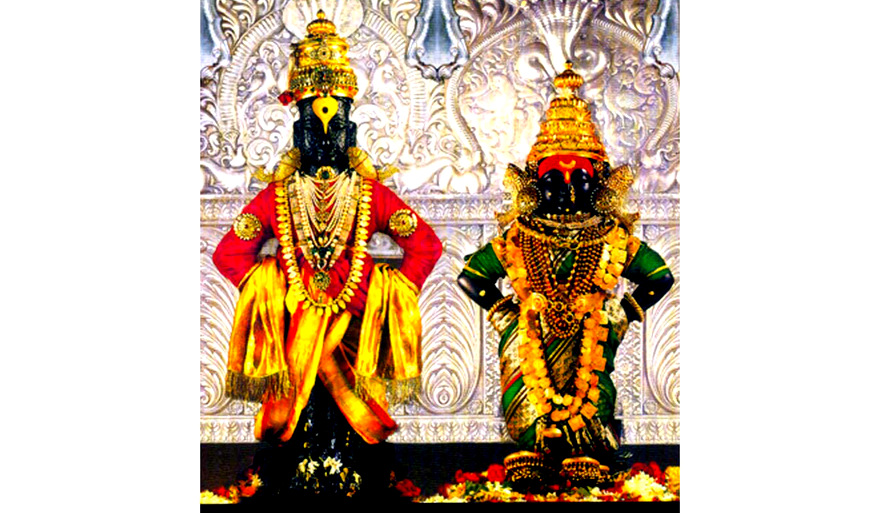
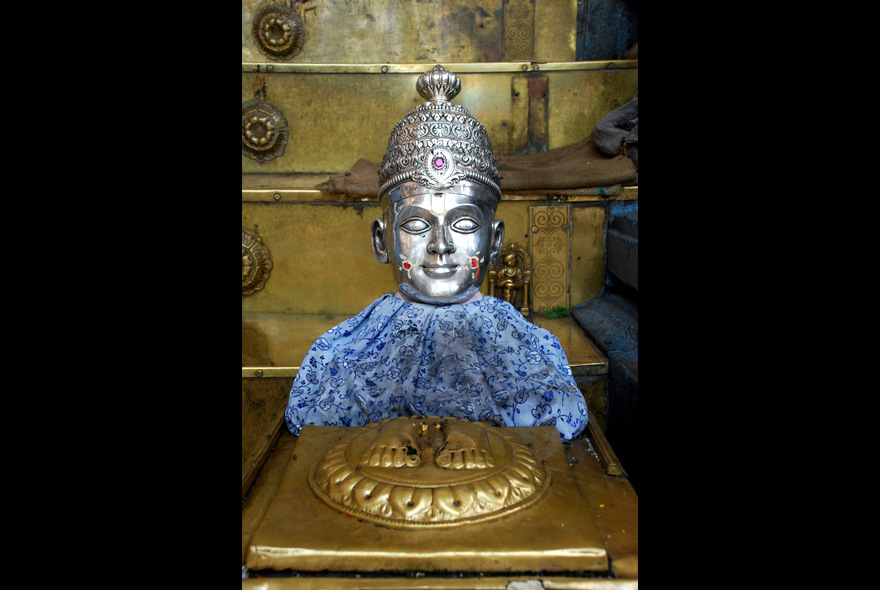
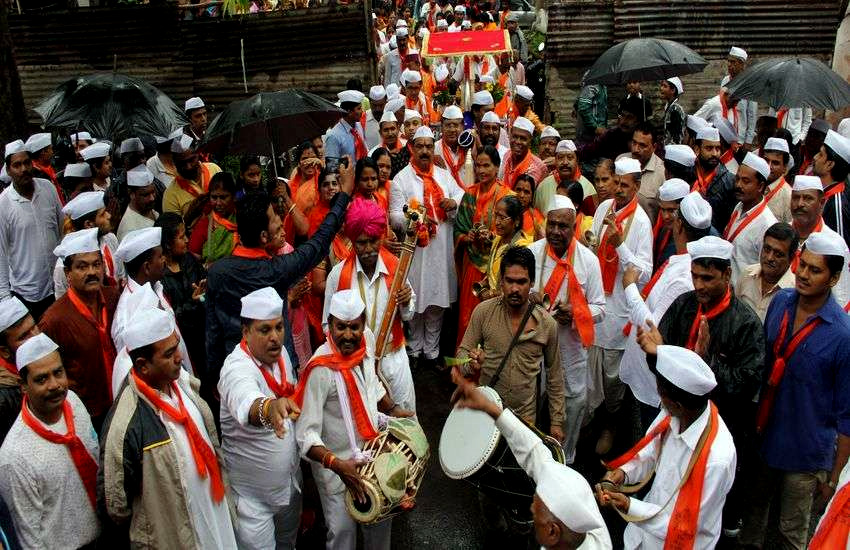
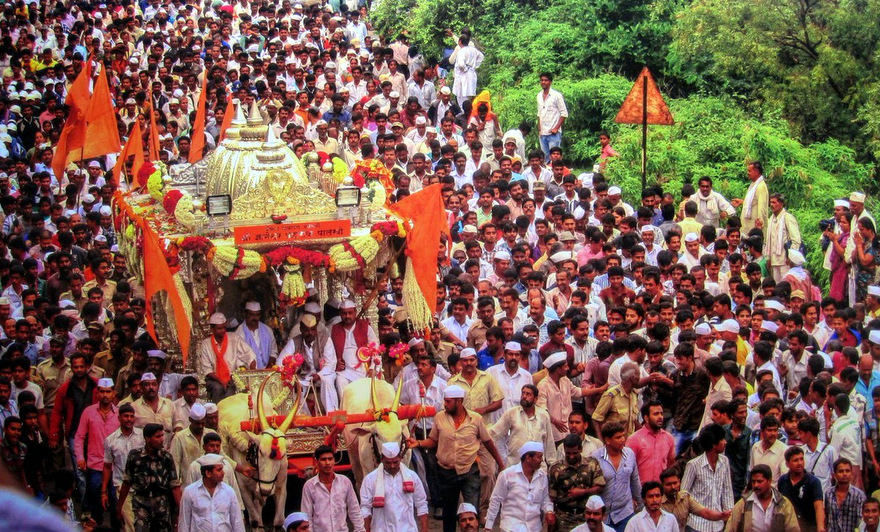
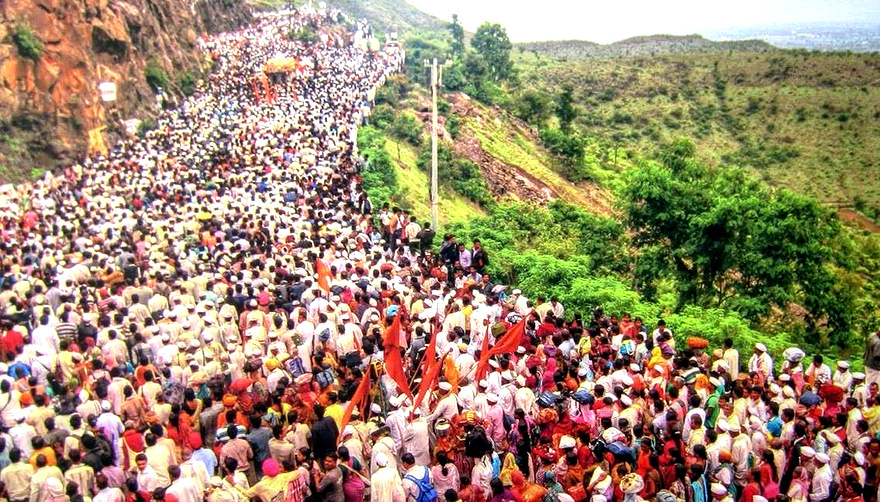

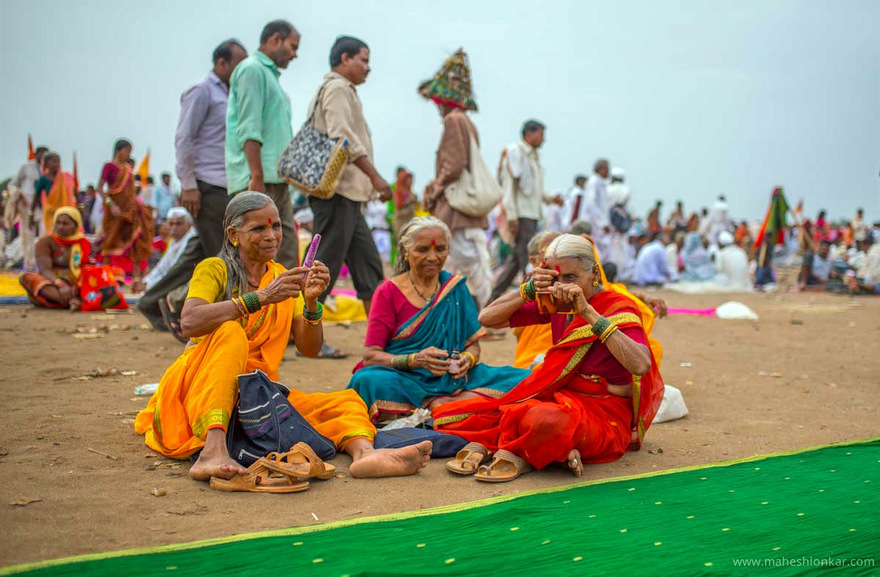
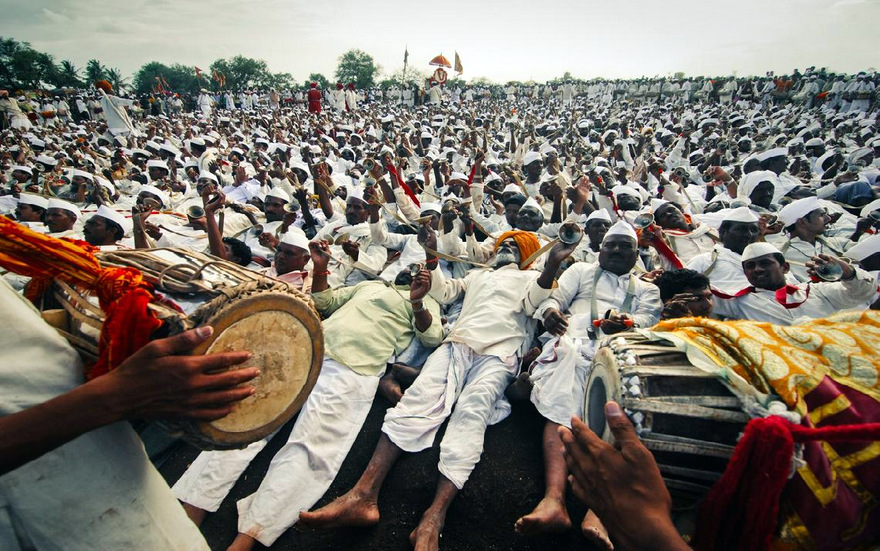
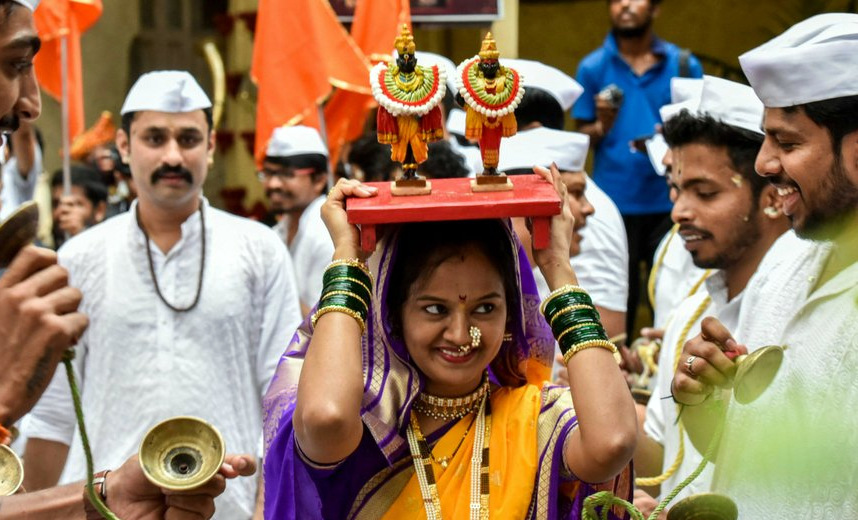
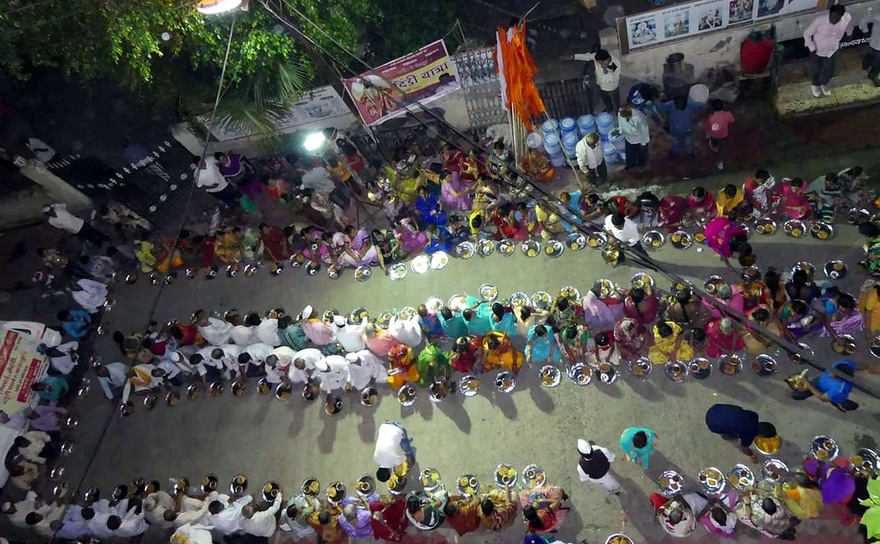
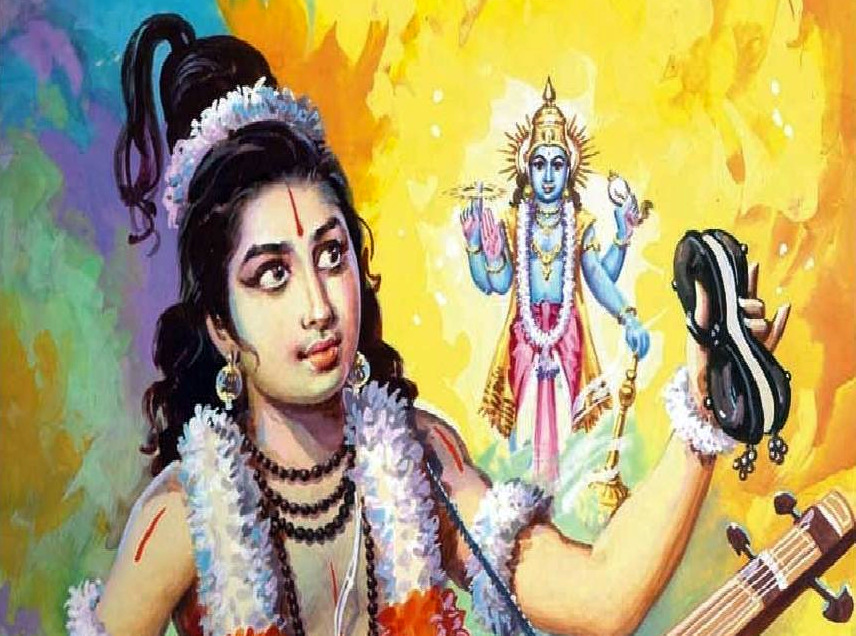
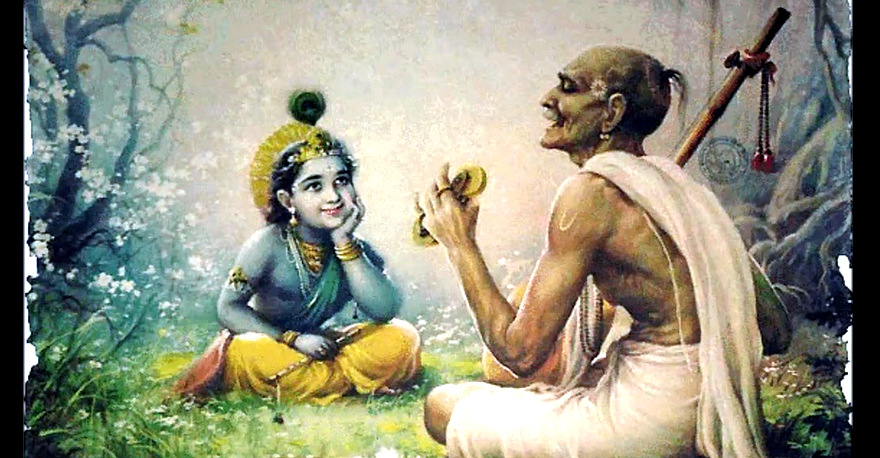
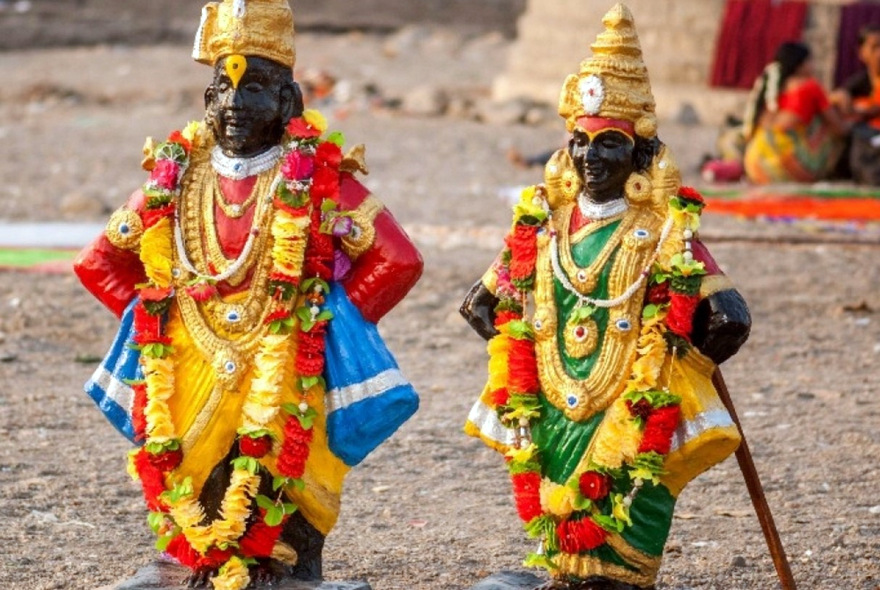
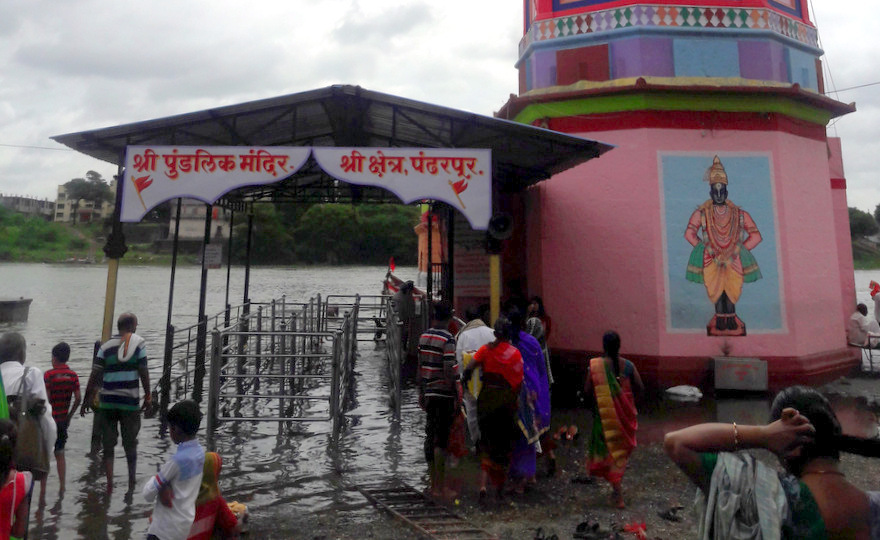
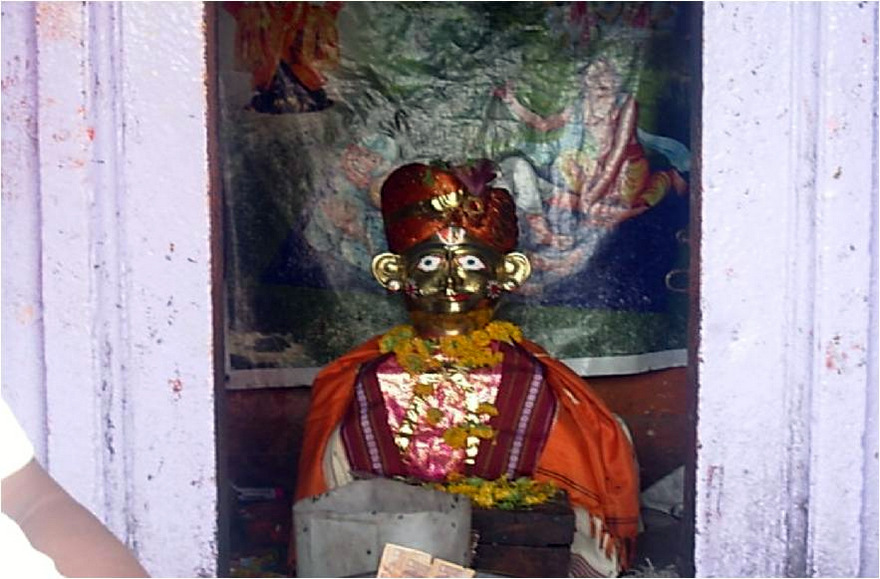
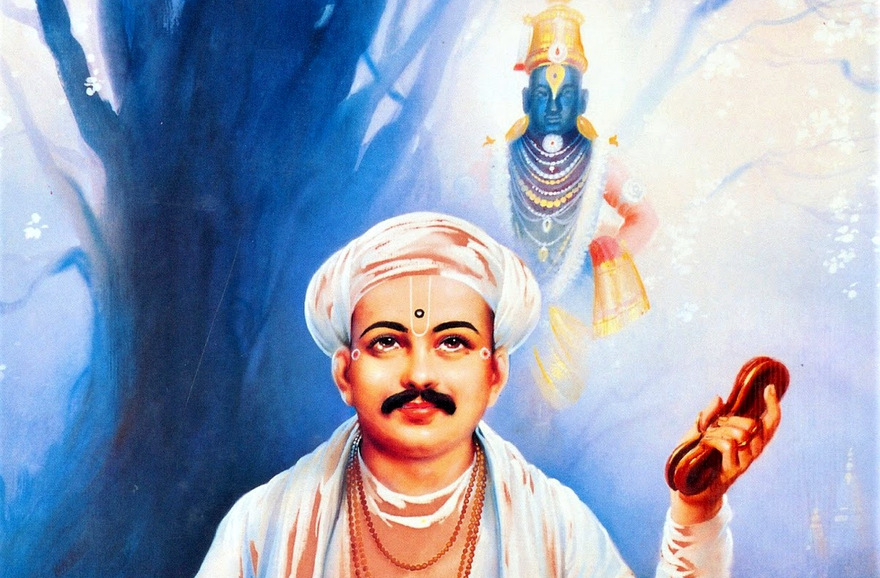










Grateful for detailed information.
Good article with pictures. It summarizes the history of Vithoba and Pandharpur in agood style in nice manner. Jai Pandurang Vitthal.
My first sight of the singing throng of the pilgrims on the ghat between Pun e and the Saswad plains in the sixties had filled my being with great reverence for the simple devotees fired with
love and devotion for the Lord.
I FELT LIKE HAVING REVISITED THE TEMPLE OF LORD VITTALA
Thank you for this lovely articles with beautiful images of lord with his consort. While in Bombay, a decade ago, though being senior executives of a nationalised Bank, myself and my colleague- friend of mine, one fine day, simply left for Pandharpur in a train with third class tickets,sitting/standing at odd places, traveled to Pandharpur with all the discomforts. But lord made our visit to the temple comfortable with very good dharshan including the privilege of touching his revered feet with our heads. Your article reminds me of this incident only to bring tears of joy, mellowed devotion and appreciation to the blessed Varkaris.
Beautiful pictures. Excellent information about this Holy Shrine. Hari Om.
Aum,
Really grateful for this Panduranga Darshan through this article.
II Sundara te dhyaan ubhe vitevari II
Let almighty Pandharinatha (Vithoba) bless ALL !!!
Jai Pandurang, Jai pandurang, Jai pandurang, vittala, vittala. Vitals vittala vittala, vittala. Vittala, vittala, vittala, vittala vittala
Very interesting detailed explanation
Glad to know the detailed story of Lord PANDURANGA of Pandarpur
Visited Pandharpur and had Darshan of Lord Vitthala in 1959 at the age of 16 along with my father. It was a Divine Experience. Today after 60 years I have received again the darshan and Blessings of the Lord. Ever so Grateful.
Very well written and with some good photographs to illustrate. Many thanks to Sri Sainath Reddy for this evocative post! May he ever have the blessings of Lord Panduranga.
Sri Panduranga ,it is said ,is a combination of Sri Vishnu,Sri Brahma & Sri Shiva .when we pray Sri Panduranga we pray all the Trimurthys .The river Chadrabhaga is equally as Holy as Ganga.
The sands on the banks of River Chandra Bagha are frequented by great Sants of Sri Panduranga and so it is as Sacred as Holy Ash.( VIBHUTHI).It is said one should visit this Holy city of Panduranga,PANDARPUR, at least once in their life time & have the Divine DHARSHAN of Sri Panduranga Nd Sri Rukumai and also the houses of Sant Thukaram,Sant Gnaneshwar,Sant Namadevar ,Sant Ekhnathar ,sant Kabir Dasar , Sant Pundarikar and et all.
Sri Panduranga Sri Panduranga Sri Panduranga Pakhimam Maam Sri Panduranga Rakshmaam .
Thanks for the wonderful article with eye- catching photos of all places in the holy Town of PANDARPUR and also of Sri Panduranga And Sri Rukhumai
Adi shankaracharya existed before christ not in 8th century. Dont be a puppet of british history.
A very good and informative article on Lord Panduranga.
Thank you very much
Inspiring article giving all relevant details. The Bhakti of Vithoba, the bhajans and keertan by varkaris are gem of maharashtrian culture.
Thank you very much for publishing an interesting article. It is nicely written and I felt I was at Pandarpur.
I pray Sri Panduranga & Sri Rukmani devi to bless me to visit HIM.
My sincere prostration to Lord Pundarika May His blessings MA shower on all of us. The entire humanity
OM NAMO NARAYANAYA
Very interesting facts hitherto unknown to me. Many thanks for such a nice contribution. Jaya Panduranga Prabho Vittala….and sincere respects to all the devotees.
Thank you for the lovely article. I am willingly accepting to share and spread the message.
regards, Vijayalakshmi Raghavan.
very beautiful article.thanks
Thank you. Very absorbing. Felt as if I was there at this place having darshan. I have not yet got a call from Vittala to visit him. but, today after reading this articl, I have prayed to Vitala to bless me with a visit and a darshan.
Very very informative about Pandarpur. Although we visited there, but we couldn’t get this much information. Thanks .
Sri Adi Shankara period is BC 509 to BC 477 and not 8th century as you mentioned in your article. Its incontrovertibly proved with a research on Poorna nadhi at Kaladi, the birthplace of Sri Adi Shankara by PujyaShri Chandrasekarendra Saraswathi Shankaracharya swamigal, who blessed us all for 100 years, 68th Shankaracharya of Sri Kanchi Kanjiyai Matam, In Tamil Nadu..